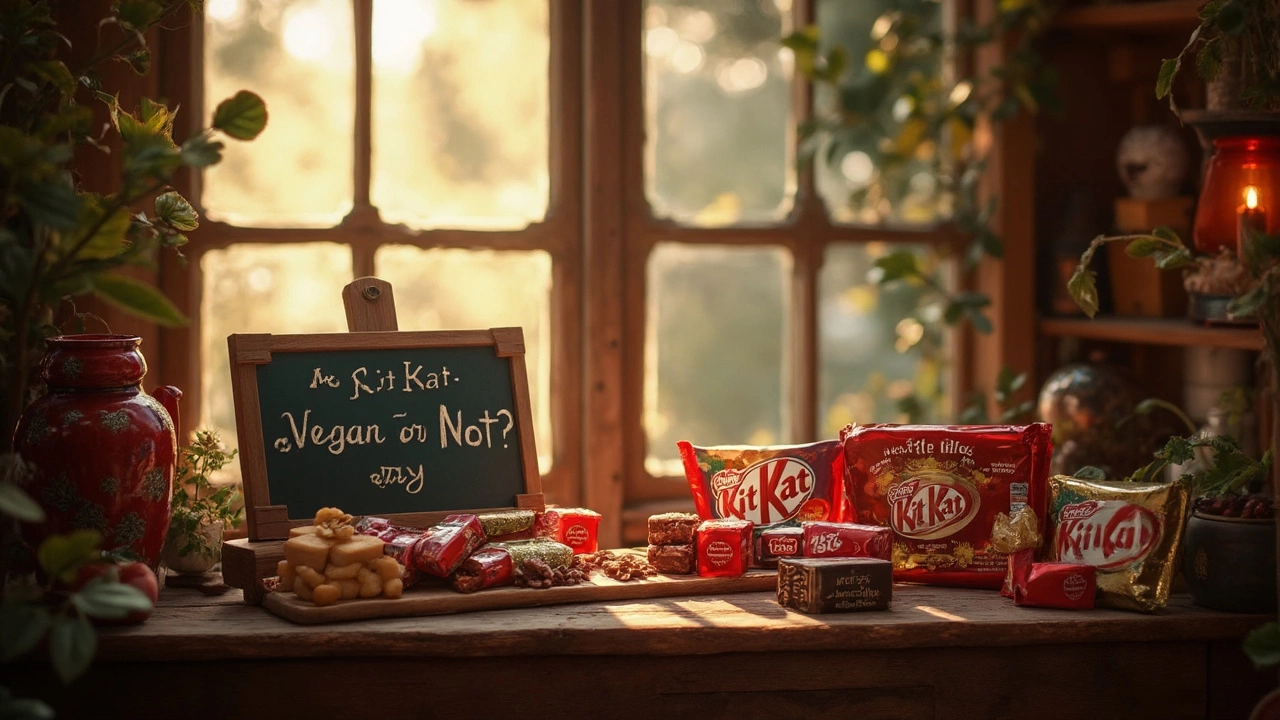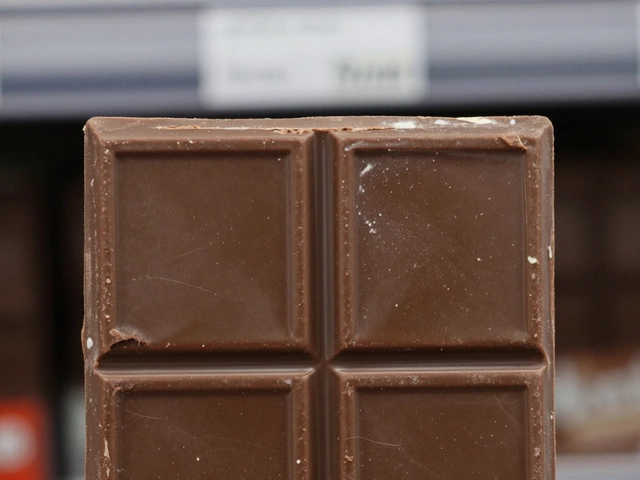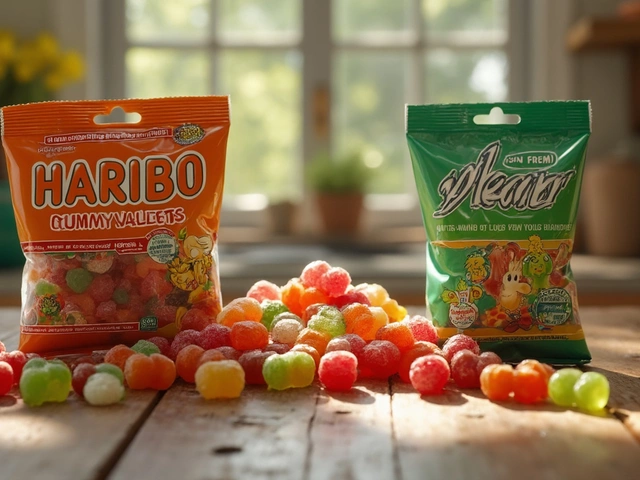
Ever found yourself staring at a Kit Kat bar, wondering if it fits into your vegan lifestyle? You're not alone. This question has puzzled plant-based eaters for a while, so let's get straight into it. The first thing you need to know is what's inside a traditional Kit Kat.
Most Kit Kats are made of milk chocolate, which, you guessed it, includes milk. As you're probably aware, anything with milk isn't vegan. However, it's not all doom and gloom for chocolate-loving vegans! There are plant-based options emerging on the horizon thanks to the growing demand for vegan treats.
- Unpacking Kit Kat Ingredients
- Vegan-Friendly Alternatives
- Understanding Vegan Chocolate Labels
- The Future of Mainstream Vegan Chocolates
Unpacking Kit Kat Ingredients
Let's break it down, ingredient by ingredient, to really understand what goes into a Kit Kat. It all starts with the outer coating, the chocolate layer that holds those delightful wafer bits together.
The Chocolate Coating
Traditional Kit Kat bars are wrapped in milk chocolate. This involves cocoa solids, cocoa butter, and most notably, milk. For folks on a vegan diet, any presence of milk is a no-go. Hence, this classic version doesn't pass the vegan test.
The Wafer Center
Inside each Kit Kat, you have the wafer. It's composed of wheat flour, sugar, and some added oils to keep everything crisp. From a vegan perspective, this part looks good. No animal products here—phew!
Other Ingredients
There are a few more things in the mix, like emulsifiers. These are used to keep everything smooth and blend the chocolate and wafers together. The common emulsifiers in Kit Kats are soy lecithin and sometimes a non-vegan lecithin, depending on the factory's practices.
There's a chance manufacturers might tweak their recipes too, like incorporating alternative emulsifiers or adding flavors. This variability means you need to double-check the packaging, especially since Kit Kats are produced differently across various countries.
Regional Variations
Let's draw our attention to Japan, famous for its eccentric Kit Kat flavors. In some cases, you might stumble upon varieties with unique ingredients, though it's a hit-or-miss for vegans. Knowing how a specific flavor is made can be key for vegan shoppers.
| Key Ingredient | Vegan Status |
|---|---|
| Milk Chocolate | Not Vegan |
| Wafer | Vegan |
| Emulsifiers | Possibly Vegan |
So there you have it, a snapshot of what's inside a Kit Kat. If you’re trying to keep it vegan, look for alternatives with clear labeling or newer vegan versions that hit the shelves now and then.
Vegan-Friendly Alternatives
Don’t despair, chocolate lovers! If you're searching for a vegan version of your beloved Kit Kat, you're in luck. The confectionery world has stepped up its game in recent years with several brands making delicious plant-based chocolate bars that try to mimic that classic crunch.
Top Vegan Chocolate Bars
While your local supermarket may offer a few options, here are some standout vegan chocolate bars that closely resemble Kit Kat goodness.
- Vego Whole Hazelnut Chocolate Bar: Vego bars are a favorite among the vegan crowd for their creamy texture and whole hazelnuts, giving you a satisfying crunch without a drop of animal product.
- LoveRaw Cre&m Wafer Bars: This UK-based brand has created a vegan wafer bar that’s been compared to Kit Kats in terms of texture. The wafer is covered in a rich, plant-based chocolate that provides a nostalgic bite.
- Kit Kat Vegan: Yes, that's right! Nestle has unveiled a vegan chocolate bar that mimics the classic Kit Kat. Made with sustainable cocoa, it's their answer to the growing demand for vegan sweets. Availability might be limited depending on where you are, but it's worth a look.
Tips for Choosing Vegan Chocolates
When scouting for vegan desserts, it's important to check the label. Look for certifications like 'vegan' and scan the ingredients list for any hidden animal products. Sometimes, chocolate might contain milk powder or butterfat which you want to avoid.
Additionally, keep an eye out for sugar sources. Some sugars are processed with bone char, a process that’s not vegan-friendly. Choosing organic or certified vegan chocolates can keep you on the safe side. As the market for plant-based sweets grows, more options are becoming available, so there's always something new to try.

Understanding Vegan Chocolate Labels
When you're scouting for vegan chocolate, the labels can feel like a minefield, right? But they don't have to be. Once you know what to look for, it gets easier to spot the truly plant-based treats from those merely masquerading as them.
Look for Certified Labels
The simplest trick is to hunt for official vegan certifications. Organizations like the Vegan Society or Certified Vegan have their logos on products that meet strict vegan criteria. That's a surefire way to know what you're biting into is free from animal products.
Common Non-Vegan Ingredients
If those logos aren't there, keep an eye out for hidden sneaky ingredients. Casein, whey, and lactose are big no-nos. They all come from milk, and you'll find them often listed under milk products.
What About Palm Oil?
This one's a bit trickier. While it's plant-based, the ethical concerns around palm oil production make some vegans steer clear. It's not about it being animal-derived but about its environmental impact.
Dark Chocolate Isn't Always Safe
Before you grab that bar of dark chocolate thinking you're in the clear, double-check the ingredients. Some brands add milk solids, so scan the list carefully.
Chocolate Data to Chew On
If you're interested in the numbers, here's some sweet data:
| Brand | Vegan Certified |
|---|---|
| Brand A | Yes |
| Brand B | No |
| Brand C | Yes |
This little table might help you get started on your next chocolate shopping spree. Remember, when in doubt, check that label again. Soon you'll be an expert at identifying vegan desserts!
The Future of Mainstream Vegan Chocolates
The world of vegan chocolate is growing fast, and it's catching the attention of major brands like never before. With the rise of environmental concerns and dietary changes, the demand for vegan chocolate options has seen a boost, and companies are stepping up their game.
Many big-name chocolate makers have started releasing plant-based versions of their classic treats. Cadbury, for instance, launched a dairy-free version of its popular chocolate bar in response to the surge in veganism. Similarly, Nestlé hasn't shied away from the trend; they're actively working on creating plant-based sweets that mimic the taste and texture of their original products.
Technological Advances in Vegan Chocolates
Technology is playing a big role in making these vegan versions taste better. Brands are investing in innovations to create alternatives that don't just replace, but also improve. We're talking about using ingredients like oat milk and rice-based components to create that melty, creamy chocolate experience we all love. And that's not all—some companies are even exploring lab-grown milk proteins to replicate that authentic flavor without involving animals.
The Impact of Consumer Choices
Consumer interest also fuels this change. Studies show an increase in people opting for vegan products for health, ethical, or environmental reasons. More so, the social media buzz and community influence can't be overlooked. When a product gets the vegan seal of approval online, it tends to sell out quick, showing just how powerful the demand is.
So, what can you expect in the chocolate aisle? Soon, it might be just as common to find vegan chocolates as it is to find the standard ones. It's a sweet future indeed for vegans and anyone looking to enjoy chocolate with a clear conscience!












Write a comment